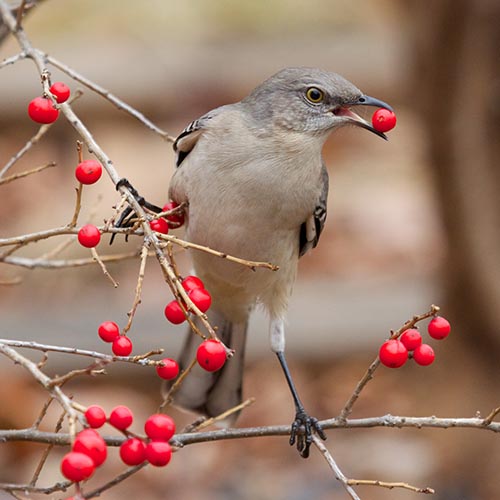
Listen to this Episode:
- From this webpage:
- Find the media player located under the episode picture.
- Click on the green triangle to listen to the audio for this episode.
- From your favorite podcast listening platform:
- Search for “Backyard Ecology.”
Show notes:
Sometimes you read or hear something that makes you say, “Wait a minute! What?” It was one of those moments that led to this episode. In this episode of the Backyard Ecology podcast, I talk with David Mason. David is a PhD candidate at the University of Florida who has been doing some really interesting work related to songbirds, seed dispersal, and disturbed areas.
Open habitats such as grasslands, shrublands, and open woods are often very rich in bird diversity and abundance. Fires used to be a relatively common occurrence in these areas and would help them remain open instead of growing up into closed canopy forests. Many of these areas are adapted to fire, but we don’t always realize it because fires have been suppressed for centuries. Over the last few decades, however, the use of prescribed fires for maintaining open habitats has become increasingly common.
Much of David’s research is focused on seed dispersal by songbirds after a prescribed fire. David shares this research with us including the types of seeds that birds are bringing to his research sites. We also talk about what he isn’t finding, which is actually why I wanted to have him as a guest on the podcast. We not only discuss his findings, but also the potential implications and applications of those findings.
David’s research on songbird-mediated seed dispersal after prescribed fires is the main focus of our conversation. However, his broader interest is in seed dispersal after a variety of disturbance events – prescribed fire being just one type of disturbance and songbirds being just one method of dispersal. Towards the end of our conversation, we briefly touch on another branch of his seed dispersal research. This is a connection that I don’t know if I ever would have thought about on my own, but it raised some interesting questions for me and made me think about things a little differently.
Links:
- David’s contact info:
- Website: https://davidmason.work/
- Instagram: @ecograffito
- Twitter: @ecograffito
- email: masond@ufl.edu
- UF D.E.E.R Lab
- Facebook: https://www.facebook.com/ufdeerlab/
- Instagram: @ufdeerlab
- Twitter: @ufdeerlab
- Backyard Ecology’s website: https://backyardecology.net
- Backyard Ecology blog: https://www.backyardecology.net/blog/
- Backyard Ecology’s Patreon page: https://www.patreon.com/backyardecology
- Subscribe to Backyard Ecology emails: https://www.backyardecology.net/subscribe/
- My email: shannon@backyardecology.net
Episode image:
Mockingbirds and other songbirds can be important agents for seed dispersal.
Photo credit: Matt MacGillivray, CC-BY 2.0

Backyard Ecology: Exploring Nature in Your Backyard
Nature isn’t just “out there.” It’s all around us, including right outside our doors. Hi, my name is Shannon Trimboli, and I am the host of Backyard Ecology. I live in southcentral Kentucky and am a wildlife biologist, educator, author, beekeeper, and owner of a nursery specializing in plants for pollinators and wildlife conservation. I invite you to join me as we ignite our curiosity and natural wonder, explore our yards and communities, and improve our local pollinator and wildlife habitat. Learn more or subscribe to my email list at www.backyardecology.net.

Leave a Reply